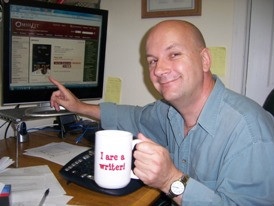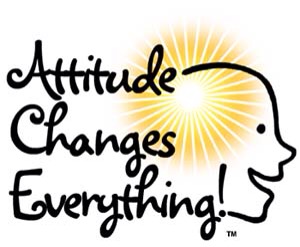Interview I did for 2016 GLVWG “Write Stuff” conference. Original can be seen at the GLVWG conference blog.
—-
 Hi Robert,
Hi Robert,
We are thrilled to have you join us as our keynote speaker for this year’s Greater Lehigh Valley Writers Group “Write Stuff” conference along with teaching “From Mind to Manuscript: The Making of Your Masterpiece” and “Thrillers and Mysteries: How Knowing the Difference Will Help You Write a Great Story” for the pre-conference workshops.
Would you mind giving a teaser of what you’ll be covering during the preconference workshops and your keynote speech?
Robert Liparulo: First, I’m excited to be a small part of this conference. I’ve never attended, but have run into people who have and have loved it, all the learning and networking—oops, I mean socializing.
My full-day workshop will be a nuts-and-bolts analysis of what it takes to take your story idea from your head to a published book, in the hands of readers. A lot of books and seminars offer a sort of recipe or step-by-step guide to getting published, but really, it doesn’t work that way. If it did, everyone who’d read one of these books or attended one of these seminars would be published.
Storytelling in a way that involves the publishing industry is an art—way too subjective for cookie-cutter recipes—and everyone attempting it is unique, with his or her own set of skills and motivations and styles and hang-ups and frustrations and moments of brilliance and . . . you get the idea. My workshop will approach the process of writing and getting published—as well as what comes after—with this practical, real-word writing-as-art (i.e., subjective), writer-as-artist (i.e., unique) perspective. Forget the books, forget step-by-step; here’s what it’s like to really do it, in the heat of the battle, what they don’t tell you. I don’t like lectures—they’re boring and the topics of writing and publishing are way too expansive and complicated for one person standing at a podium to address all the issues meaningful to attendees. So while my workshops will have a semblance of structure, and I’ll have important points to address, I’m counting on the attendees to let me know what’s important to them about a specific subject, to make our time time very interactive and meaningful—conversations rather than presentations.
Based on other interviews I’ve read, I understand you started writing poems and then short stories as a kid before you moved into journalism. Could you tell us a little bit about your initial writing adventures?
Robert Liparulo: I was in third grade when I realized I wanted to be a writer—I don’t really know why, and I didn’t know at the time what kind of writer. In fifth grade, I wrote an article about an experimental jet flying across the Atlantic and stopping in the Azores islands, where I lived. My teacher sent it to a magazine, without telling them my age. A few months later, I received the magazine with my published article and a check. I was pretty much hooked on writing articles from that point on.
When I was 12, I read I Am Legend by Richard Matheson. For about half the book, the main character, Robert Neville, tries to get a sick dog inside his home. When he finally does, he spends the night taking care of it. Stroking the dog’s head, he recalls the way things used to be. We come to realize that the dog wasn’t just a dog; it was symbolic of life as it had once been and would never be again: family picnics, movies, relative peace and calm. The last line of the chapter was something like, “In the morning the dog was dead.” I started crying, and I thought, “If words—only WORDS!—can make a pretty tough 12-year-old boy cry, I want to do that.” For years I went around telling people what I wanted to do when I grew up was to make 12-year-old boys cry. (I’ve received emails from both boys and girls who said Frenzy, the sixth Dreamhouse Kings book, made them cry—I had to laugh that I’d finally fulfilled that goal.)
Starting when I was a teenager, I wrote for magazines like Inc., Highlights for Children, New Man Magazine, a lot of entertainment and trade publications. Eventually, with the prodding of my family and some writer friends, I started writing novels.
What advantages and/or disadvantages, if any, have you experienced by first being a journalist and then a novelist?
Robert Liparulo: For a long time, I thought, “What am I doing? My true love is fiction; I’m wasting all this time writing nonfiction.” But then, when I started writing novels, I realized how much of what I learned as a journalist translated extremely well to fiction writing, and made me a much better fiction writer than I would have been without that background. Journalism taught me how to research deeply: how to interview people, how to overcome the fear of reaching out to experts, regardless of their fame or expertise or position; it taught me how to find really cool tidbits hidden deep in archival vaults, gems which have not yet made it onto the Internet, but add levels of richness and authority to my fiction. Journalism taught me the importance of brevity and how to achieve vivid descriptions in few words, how to hit deadlines, and write authentic dialog . . . this list goes on and on. I’m convinced now that no writing—whether it be personal letters or software manuals or screenplays—is ever wasted.
With over 1,000 articles under your belt, I understand you were able to interview some of the big names in the publishing world and the music industry. What would you say are some of the most memorable interviews you’ve done? Did you have a favorite? Any interviews stick out that wasn’t from someone with a big name?
Robert Liparulo: I have so many stories about my days as a journalist, I probably should write a memoir. From interviewing Peter Cetera, of the rock group Chicago, which ended up with my accidently stranded onstage—between the drummers!—as the band played through an entire concert; to interviewing Bruce Springsteen when I was a teenager. He kept delaying the interview, which puzzled me, until he said, “Are we waiting for your father?”
The authors I interviewed collectively had an enormous impact on me in that they made me see them as human, not as demigods with supernatural powers to tell stories. I’ve always been a reader, and I held authors in such high esteem, I thought, “Surely, there’s something magical about these high-level storytellers; I could never do that.” Meeting many of my novelist-heroes—as pleasant as many of them were—showed me their humanity, that they were ordinary people who dreamed big and worked hard—things I could do!
The author most responsible for my finally biting the bullet and driving me to write my first novel is someone whose name I can’t reveal (he specifically asked to remain anonymous); suffice to say he’s a bestselling novelist with a household name. He found out that I actually wanted to write novels and started calling me every month to ask, “Have you started yet?” After about a year, I started Comes a Horseman just so I could finally say, “Yes! I’ve started!”
Ted Dekker and I were friends before either of us had started writing novels. When he published his first books and was starting to get some heat, I interviewed him for New Man Magazine. Despite having been friends for some time, that interview revealed a side of him I hadn’t known, mostly the way his mind works through stories, piecing them together like big jigsaw puzzles, and the business side of writing, which he grasped better than any other author I’d ever met (to my knowledge). His insights helped me tremendously in completing my first novel and launching my brand.
I understand you like to work 12-16 hours (or more) during the day when writing. What got you into immersion writing? What do you like best about it? How do you juggle work and family…and also just curious…do your characters pop into your dreams at night?
Robert Liparulo: I’m not sure what got me into immersion writing, just that it made the most sense to me, to be so into my characters and my story that everything else fades away. That’s the way I want readers to experience my stories. I’ve always thought, “Stories that don’t keep the writer up at night, won’t keep readers up at night.” The only way for me to achieve that state of immersion is through long hours in that fictional world.
Juggling long work hours and family is not easy. It takes a toll. I try to break away for dinner and tucking in the kids, but I’m only half-there. My kids grew up with it, so they naturally accepted my “writing state.” My solution was to set whole days aside just for the family; then they had all of me.
My characters don’t so much “pop” into my dreams, as my dreams are my characters’ dreams. I get so into my characters, I become them, I eat what they would eat, walk like them, talk like them, dream their dreams. I know, weird. When I was writing the Dreamhouse Kings series, I became my main protagonist, a twelve-year-old boy named David. I played soccer with my son and his friends, watched kids’ movies, ordered from the kids’ menu. I’ve spoken to hundreds of schools and always get twelve-year-olds telling me how deeply they related to David. So I guess it worked.
I understand several of your books are in various stages of development for the big screen, including the first book you’ve written and your young adult books ‘Dreamhouse Kings.’ Anything you can share with us?
Robert Liparulo: Hollywood is a unique beast. Lots of ups and downs. Everything revolves around financing, which comes and goes. Even studio executives at the highest levels can no longer simply “make it happen.” Second to that is trying to reconcile differing creative visions. The producer who bought the rights to Comes a Horseman, Mace Neufeld, who made all of Tom Clancy’s movies, apparently spent millions developing scripts, which never satisfied him; he’s a brilliant visionary and filmmaker, so I trust his opinion. But for now, the project’s in limbo. With some of the movie adaptations, I have the contracts to write the screenplays myself, along with a couple originals, both of which come with their own obstacles and headaches. This is the kind of stuff I’ll address in my session on working with Hollywood.
What inspired you to write for both adults and young adults? Does your audience affect how you present the story? Why or why not?
Robert Liparulo: I was happily cruising along writing thrillers for adults when my publisher called to ask if I’d ever thought of writing for young adults. I think what got him thinking about it was, in part, my novel Germ had struck a chord among younger readers, mostly high-schoolers. I immediately thought of the Dreamhouse Kings story, which stemmed from a series of dreams I had when I was eleven. It felt like a story for young adults, middle-schoolers. I jumped at the opportunity, and the series became my best-selling books to date.
I knew from the start that I didn’t want to “write down” to a younger readership. I knew from my own kids and talking to many young readers that they are a lot smarter than many writers, many adults, give them credit for. And nothing drives them crazier than writing that’s dumbed down. So I decided to write the Dreamhouse Kings the way I would write an adult story, with two exceptions: one, my protagonists would be young, so readers could relate to them; and two, I wanted a topic I felt would be more interesting than the high-tech shoot-em-ups I was used to writing. The Dreamhouse Kings, which is a spooky time-traveling adventure, fit that bill perfectly.
So….do you have a usual go-to to get the creative juices working if and when you’re stuck?
Robert Liparulo: What inspires me most is excellent art. Doesn’t matter what form it takes—literature, film, music, paintings, statues; anything that’s done extremely well (to my mind). I have a few go-to movie soundtracks (Last of the Mohicans, anything by Clint Mansell, for example), movies (Lord of the Rings, Jaws, Memento), literature (a piece about hell by James Joyce, any Elmore Leonard or Cormac McCarthy novel) that get me in the mood to write the best I can. I keep a coffee table book with the works of Michelangelo on my desk. Not that I’ll ever achieve such excellence, but I can try.
What would you say has been the best piece of writing advice you received? Also, what writing advice do you tend to give others?
Robert Liparulo: Neil Gaiman told me the best advice for any writer: “Finish things.” Too many writers start a story, only to abandon it for whatever reason—they get bored with it, or get stuck, or get sidetracked by a story they like better or think would be more attractive to publishers. Finish everything you start, even if only for practice. That’s the type of writer publishers want, ones who finish. Know your story well enough to know it’s something you want to see to its completion, or don’t even start it.
Besides that, I tell new writers to trust themselves, their instincts. We are a generation raised on story. It’s in songs, commercials, games; we know story—its structure, what works, what doesn’t. Run with that, write your story without constantly analyzing and critiquing/criticizing it. Trust your abilities to tell a story, go for it.
The right research can add incredible depth to a story. What is your favorite way to research and what would you say has been the most interesting thing you’ve researched to date? What kind of writing project was it for?
Robert Liparulo: I always interview experts. They will tell you things you can’t find anywhere else, and you can ask follow-up questions that flesh-out the topic in ways that help you develop an authoritative voice in your story. I start with people on the periphery of the topic and ask them to whom I should speak next, which usually leads to someone a little closer to the heart of what I want to know, to a better expert. I think of research as concentric circles; I’m always moving closer and closer to the center.
I’ve researched so many fascinating topics—gene splicing and designer viruses for Germ, satellite laser weapons for Deadfall, electronically-enhanced soldiers for Deadlock, exoskeletons for The Judgment Stone, wolf-dogs trained to incapacitate targets for Comes a Horseman—it’s difficult to pick the most interesting. Probably the most interesting result of some research came when I was looking into a society of people preparing for—with the intention of helping—the antichrist when he appears. This was for Comes a Horseman. I’d been interviewing experts, largely people with religious affiliations, who’d been tracking these people, keeping an eye on them. I was getting closer and closer to experts who truly knew meaningful facts about them and their activities, when I received a call at about three in the morning. An electronically modified voice said, “Stop looking for us.” Just that. Well, I didn’t want to find my dog nailed to the front door and I already had a lot of useful information, so I stopped. But I did work into the novel the things I had discovered about them—including using the electronic voice-changer over the phone.
Last question for now, what’s something no one has asked you in an interview but you wished they had?
Robert Liparulo: Ooh, I’ve given a lot of interviews and most interviewers try to throw in something unique, so I’ve been pitched some doozies, including what’s my favorite ice cream (chocolate-peanut butter) and, believe it or not, “whitey tighties or boxers?” (“boxer briefs” seemed like a safe answer). (Your questions, by the way, have been refreshingly specific and knowledgeable—thank you!) Contrary to my ramblings here and elsewhere, I’m a pretty private person, so I don’t think there’s anything I’ve been dying to say. But I will tell you about the question that most caught me off-guard. The interviewer was especially insightful and had found something about me I didn’t know was even out there. He said, “You write unusually emotional scenes, very powerful and realistic, involving people dying or seriously injured. When you write them, are you tapping into what you felt when your sister died in a car accident?” This was a live radio interview, and I paused . . . and paused, then stuttered out something unintelligible. But the guy (however uncouth he may have been) was onto something I had never thought about. For the record, I had never consciously recalled those feelings while writing, but I realized then that subconsciously I most likely had drawn on those awful feelings.
Sorry to end the conversation on a downer, but there it is. And isn’t that what writing is all about, baring our souls?
Thank you again, Robert!
Robert Liparulo: Thank you! Looking forward to the conference!
———————-
Former journalist Robert Liparulo is the best-selling author of the thrillers Comes a Horseman, Germ, Deadfall, Deadlock, and The 13th Tribe, as well as The Dreamhouse Kings, an action-adventure series for young adults. He contributed a short story to James Patterson’s Thriller, and an essay about Thomas Perry’s The Butcher’s Boy to Thrillers: 100 Must Reads, edited by David Morrell and Hank Wagner.
He is currently working on the sequel to The 13th Tribe, as well writing an original screenplay with director Andrew Davis (The Fugitive).
When not writing, Liparulo loves to read, watch (and analyze) movies, scuba dive, swim, hike, and travel. He lives in Monument, Colorado, with his family.
———————-
Tammy Burke, GLVWG member, 2011 conference chair and past president, has published over 400 articles in daily newspapers, newsletters and regional magazines and is in the revision stage for her first YA fantasy adventure book, Uriah’s Window. When not writing, she works in the social service field, fancies herself a student of the fantastic and mundane, and is a fencing cadet and marshal in the Society of Creative Anachronism (SCA).




 In deference to our upcoming Cliff Day….
In deference to our upcoming Cliff Day….





